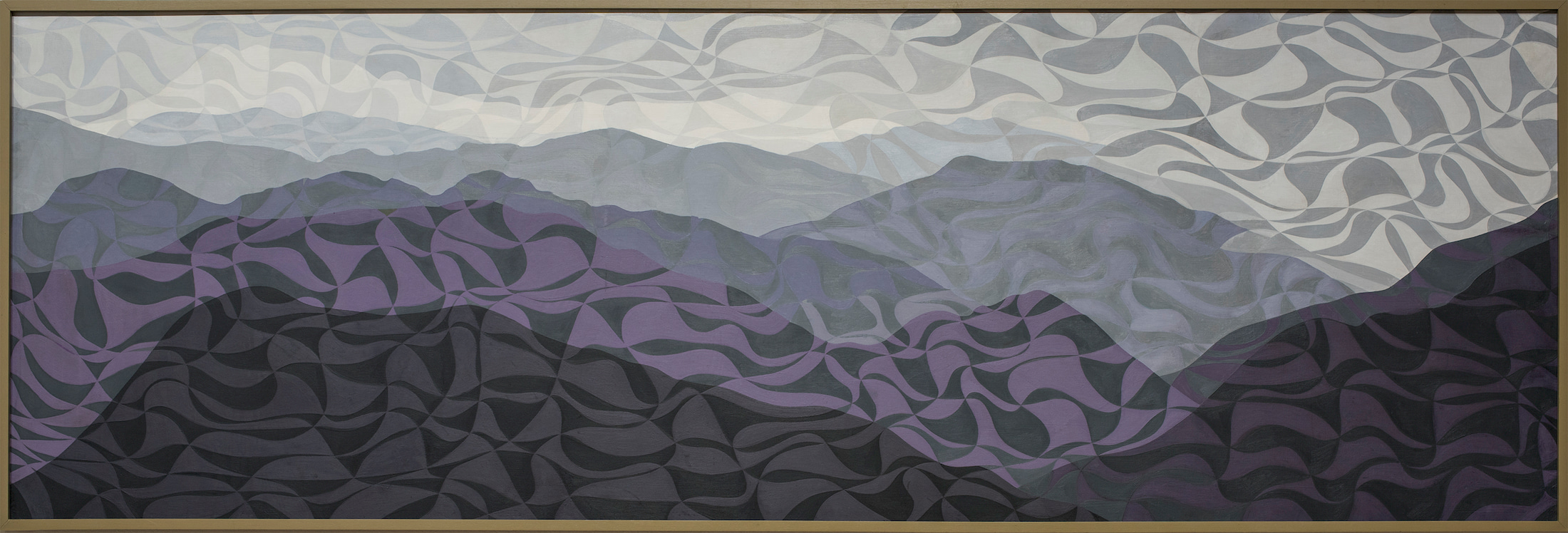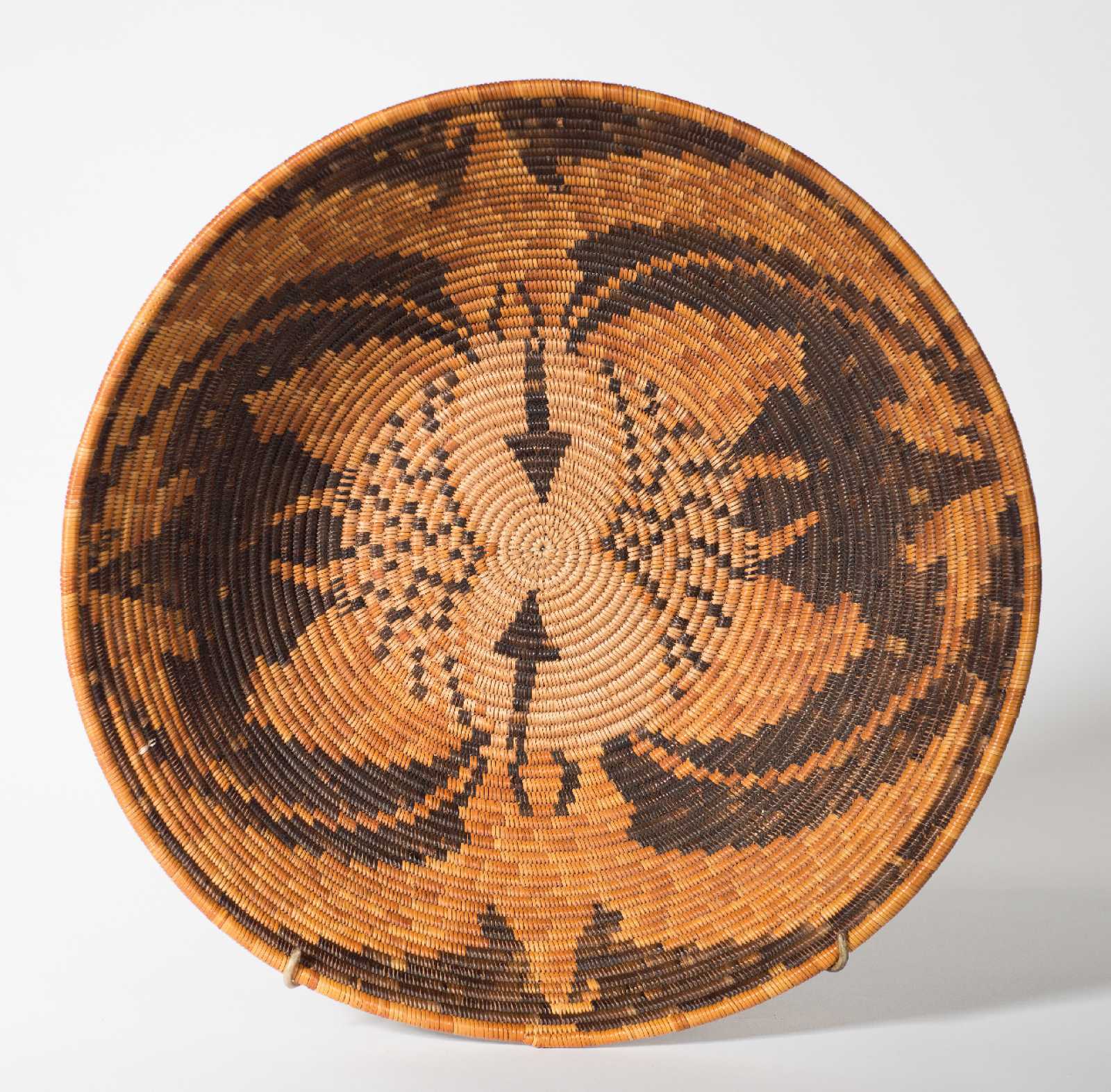Artworks of the Week
Lupe Alberras
Cahuilla basket makers were known for their intricate, bold designs and attention to detail. The exquisite, complex design of Rain and Sun Eagle Basket by Lupe Alberras balances positive and negative forms, which appear as dark and light, to create a sense of dynamic movement and tension. It is as if these majestic birds are caught in flight, as in the case of the sun eagles, or are about to take flight, as in the case of the darker rain eagles. The eagles surround a pair of black arrows on a white sumac background that meet in the center representing strength; these radiating lines are perhaps meant to resemble lightening and rain during a storm. The variegated background is made of tan and orange juncus—reminiscent of the colors of the desert landscape.
Lupe Alberras (Cahuilla, active 1900-1925), Rain and Sun Eagle Basket, ca. 1910, sumac, natural and dyed juncus on a deer-grass bundle foundation, 4 12 x 16 ¼ inches. Gift of Cornelia B. White form the Marjorie Rose Dougan Collection, A95-1974.
Eva Slater

Eva Slater (American, born Germany, 1922-2011), San Jacinto Mountains, 1960, oil on Masonite, 24 x 60 inches.
Museum purchase with funds provided by Marguerite & David Wilson and the Western Art Council, 2018.5.1.
In the 1950s, Eva Slater was instrumental in the development of California Hard-Edge painting; yet, her contribution has been largely over looked in favor of other members of the group including Karl Benjamin, Helen Lundeberg, Lorser Feitelson, Frederick Hammersley, and John McLaughlin.
Slater’s painting, San Jacinto Mountains, conveys the majesty and mystery of the mountain range that dominates the north western boundary of the Coachella Valley landscape. Stylistically, her paintings follow the tenets of the Hard-Edge movement with the use of clean lines, broad areas of rich color, and flat simplified forms with well-defined edges. Her unique contribution to this movement was the use of delicate triangles that flow throughout the painting. She referred to these forms as “cells” that functioned much like the cells in our body, forming the underlying structure of a greater whole. In San Jacinto Mountains, she stretched and molded the triangular “cells” to conform to the contours of the multi-layered ranges, and her subtle color changes create a sense of atmosphere and depth.

